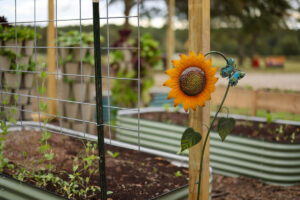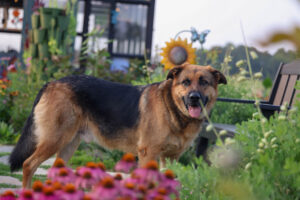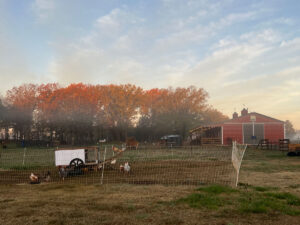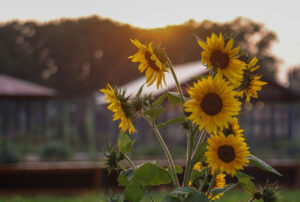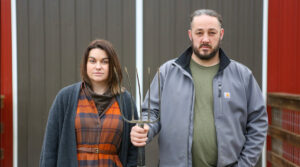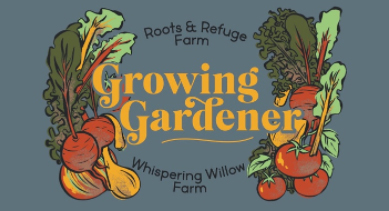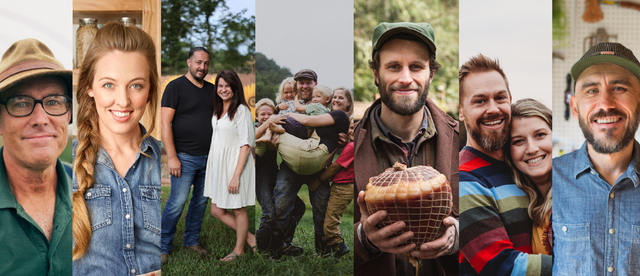Breeding your own animals on your homestead reduces stress on your animals and eliminates the potential for introducing diseases to your herd; it allows you to control the breeding for greater efficiency and profitability, and can sustainably secure a meat source for you as well. This post serves as an introduction into animal breeding as well as tips on how to maximize your goat herd and sustainably raise meat birds.
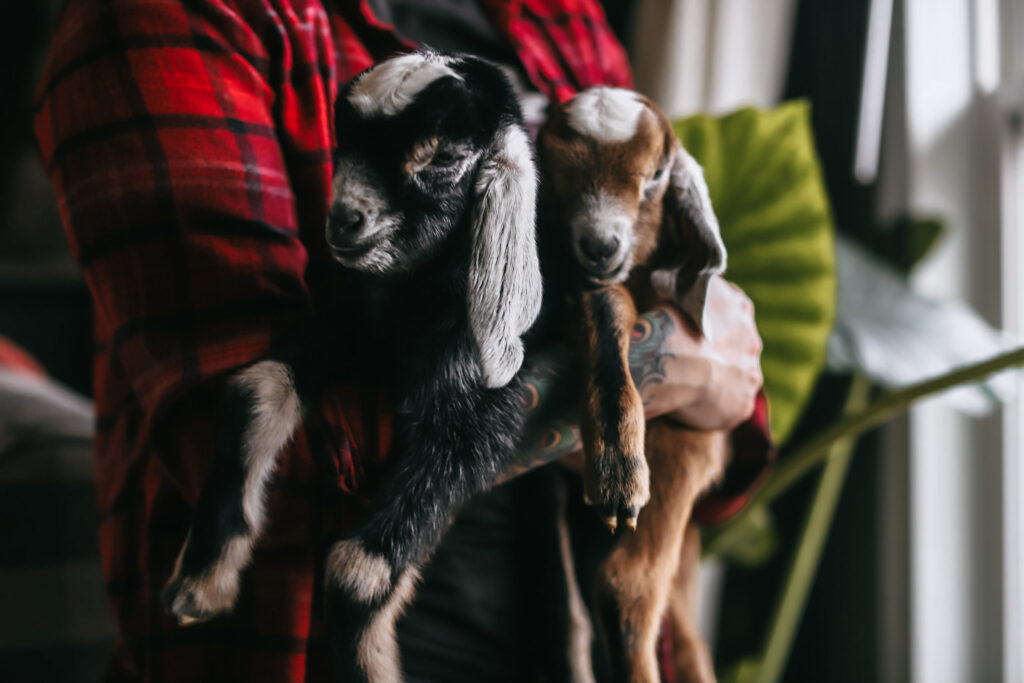
Why We Raise Our Own Meat
We believe that many of the health conditions people experience today are caused by eating meat that was raised in terrible conditions.
It only takes a little research into the commercial meat industry to understand why we believe that. It cannot be healthy for people to consume unhealthy animals.
On our farm, we think it's very important that we know exactly what went into our meat animals and how they were treated and the best way to do that is by raising our own.
We've discussed how we choose our animal breeds in more detail in this post, you can check that out if you're interested.
Our goal in raising meat on our farm is to have a closed-loop system, meaning that our animals are bred, born, raised, and processed right here on our farm. That is the most sustainable and ethical way.
Advantages of Animal Breeding
Breeding your own animals secures your meat source. It also puts you in control of whether or not the animals are organically fed or given chemicals and growth hormones.
It also reduces stress on your animals and eliminates the potential for introducing diseases to your herd.
Originally, we started with buying starter pigs (sometimes called weaner pigs) yearly. These are purchased when they are young, fed for about 9 months, and then processed.
When you’re ready to raise more, you buy more.
This was a good way to start, but it puts you at the mercy of the going market price each year and the methods of the farmer you source from. Now, we breed our own right there on the farm.
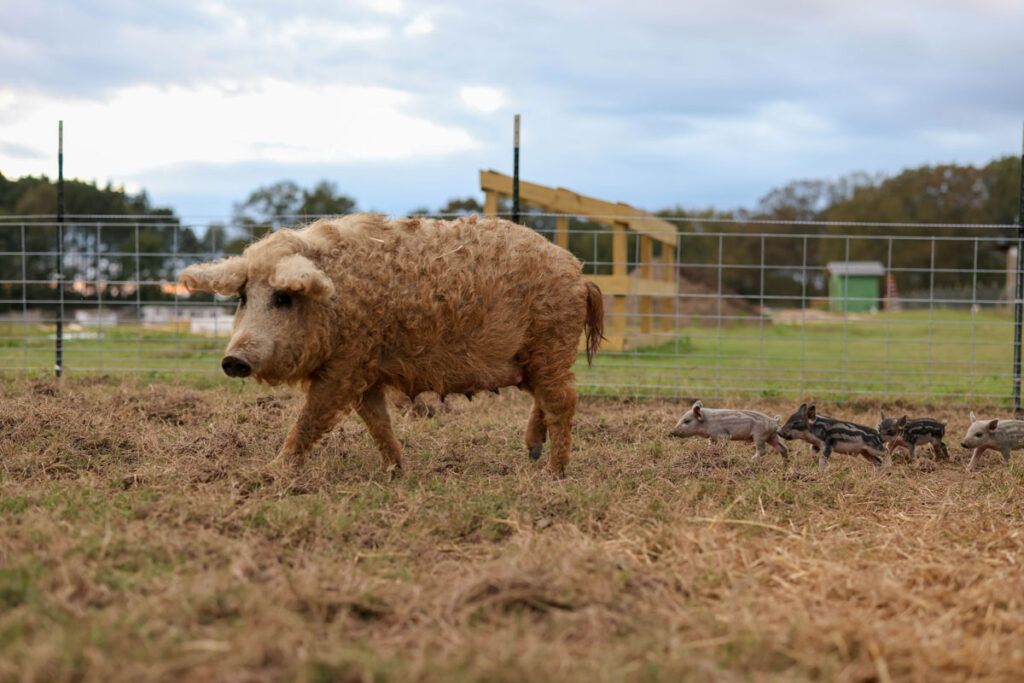
Is Breeding Your Own Animals Cheaper?
Breeding your own animals is not inherently cheaper. There are several factors to consider.
You will need at least one breeding pair, a male and female, that you keep and feed year-round which raises your overall expense. However, you will obviously save money by not having to purchase starters each year and you may be able to produce more starter animals than you need and can sell those to offset your cost.
Raising your own meat is still a worthwhile investment, even if you don’t save money. We knew that raising our own would be more expensive initially, but we kept in mind the bigger picture: if low-quality meat is causing our family to have health problems, it may cost more to eat store-bought meat in the long run.
One way to keep costs down significantly is to process your own meat animals instead of paying a butcher to do it.
Important Tip: if you cannot process meat yourself, you will need to use a butcher. Many butchers are booked out well into the next year! Call around and find a processing date, then work backward from your butchering date to decide when to breed (or buy your starters). You don’t want to be stuck with an animal that you have no way to process!
What Is the Difference Between a Meat Breed and a Dairy Breed
When it comes to animals that are raised both for their milk and their meat the dairy breeds are usually leaner and geared towards their milk production alone.
Meat breeds generally have more and better quality meat.
Essentially if you feed a dairy and meat animal for the same amount of time, the dairy breed will yield significantly less return on the meat, but they will have higher milk production.
That's not to say that you couldn’t process some of your dairy animals, but the difference in the quality and size of the meat will be very noticeable.
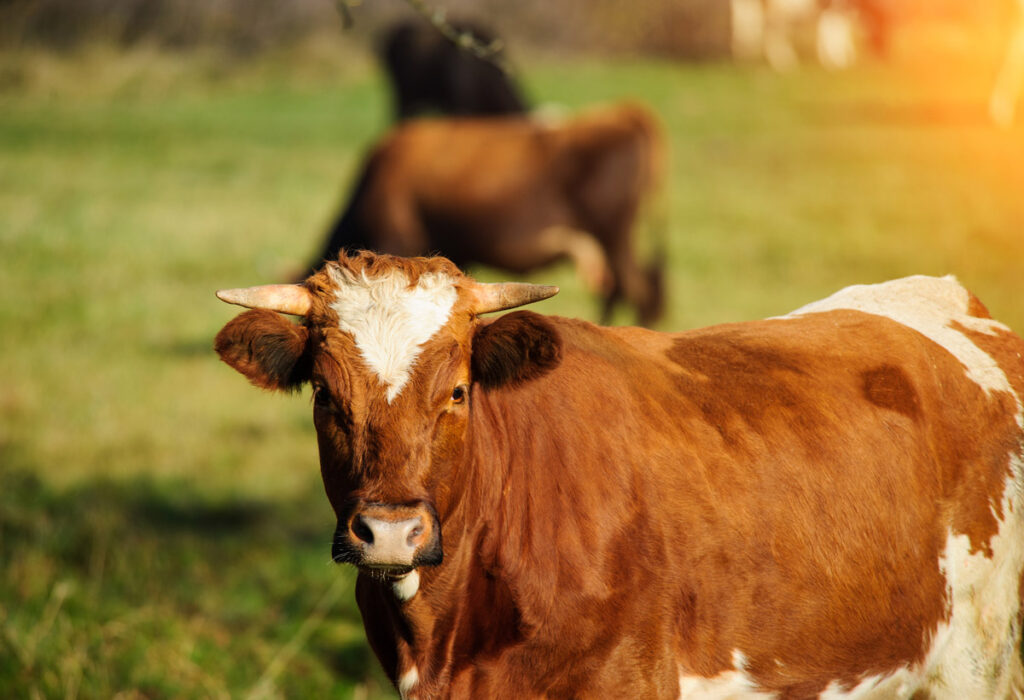
Breeding Meat Animals
You may want to raise meat animals and keep some for breeding to create a sustainable closed loop. This works best if you have the space to keep the meat animals and breeders separate!
You want the meat animals to build up meat and fat faster, but you don’t want breeders to be overweight because it causes complications and health problems. The breeding males will also need to be kept separated from the females until it is time for them to be bred.
Once separated, feed your meat animals and breeders completely different in amounts and in what you feed. For instance, our breeder pigs get a mixture of black oil sunflower, alfalfa and oats, but our feeder pigs get a grower feed.
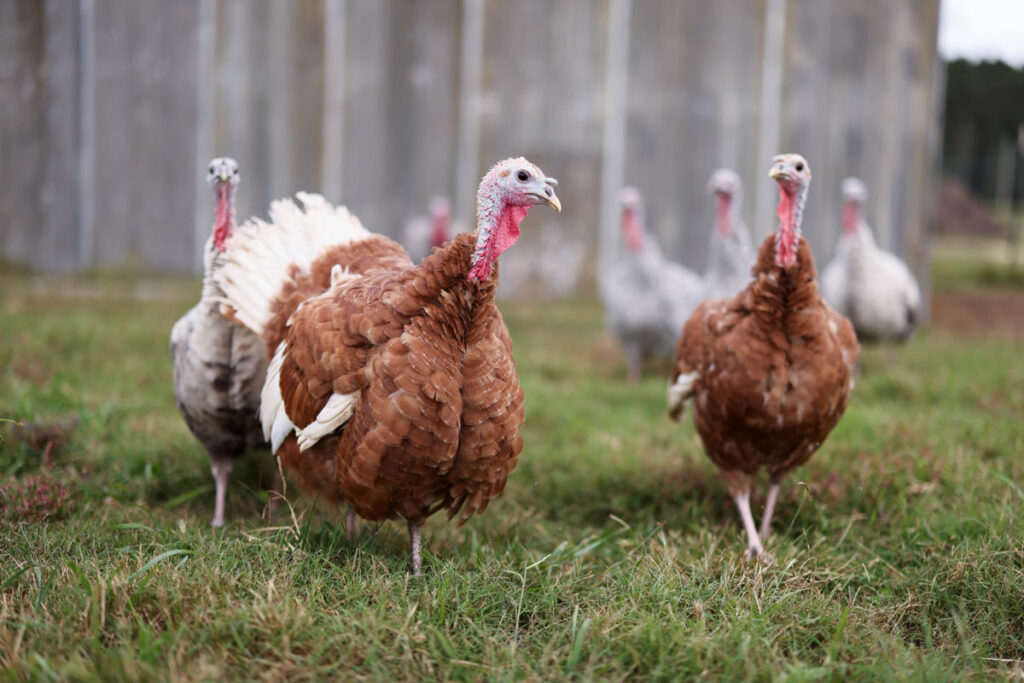
How to Sustainably Breed Meat Chickens & Turkeys
As far as the type of meat chickens, we recommend Red Rangers, Black Rangers, and Ginger Broilers for heritage meat chicken breeds. You may be able to sustainably raise these breeds by separating some hens into a different pen and keeping them lean (by free-ranging and feeding layer feed).
Raise them to the point of maturity where they can breed and lay eggs. Then hatch those eggs out. Those chicks can be raised for meat, creating a sustainable closed-loop system.
We are raising heritage turkeys as breeding stock in a similar way.
We keep them leaner and collect the eggs and hatch them so that eventually we can harvest those heritage turkeys sustainably. As a heritage breed, it will cost more to get them to weight because we will have to grow them to about 24 weeks as opposed to 16 weeks for a commercial turkey. They will have less breast and thigh meat, but the meat is very dark, rich and flavorful.
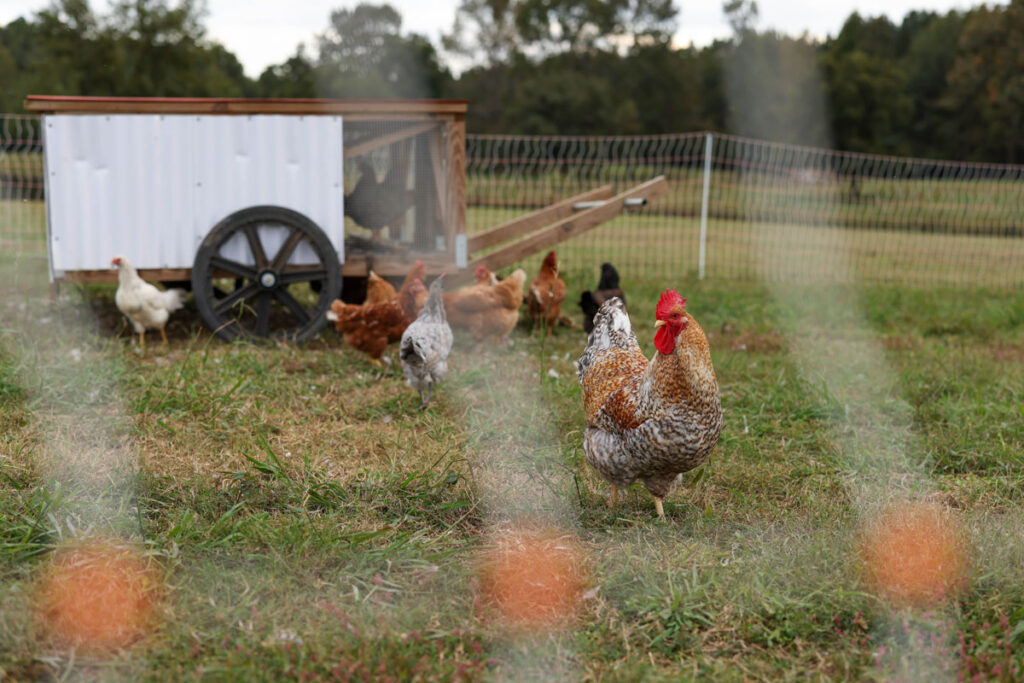
What About Dual Purpose Breeds
I often get asked about dual-purpose poultry breeds. Many people want to have one flock for eggs and meat.
While it is possible, I recommend looking at layers and meat birds as separate endeavors. You will want to feed your layers differently than meat birds.
Layers are fed a diet that keeps them lean with strong eggshells. Meat birds will need a different feed that is geared towards weight gain.
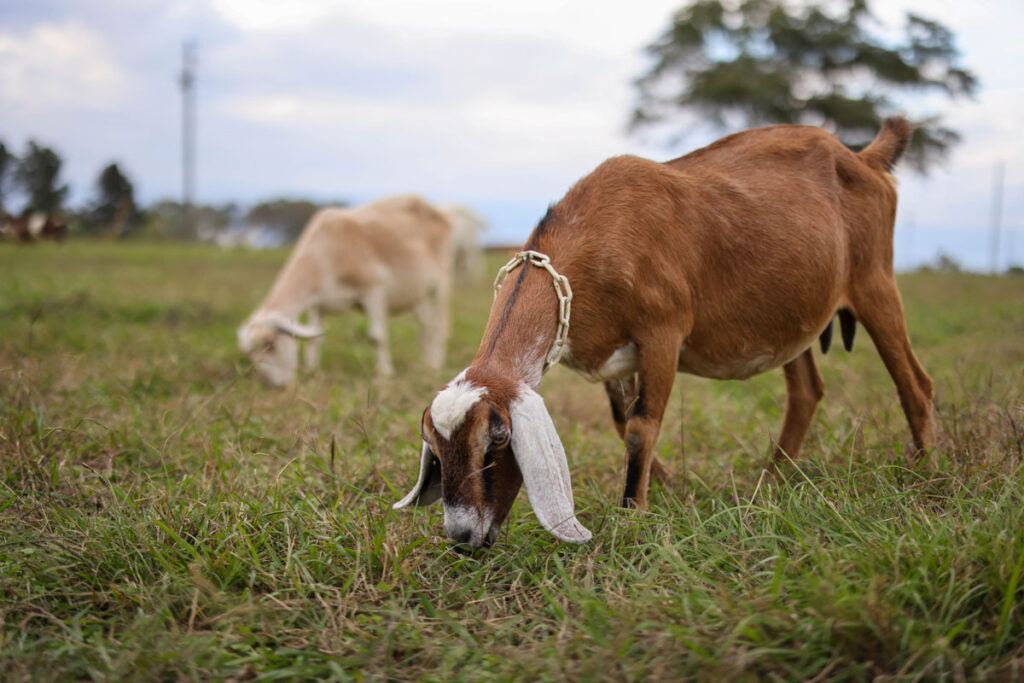
Breeding Goats
In order to maximize a homestead goat herd, you can keep does that are a dairy breed and a buck that's a meat breed.
Breed the buck to the does. The offspring can be used for meat production and the does can be used for milk production once they have been bred.
You will get higher meat content while still putting your dairy doe into milk.
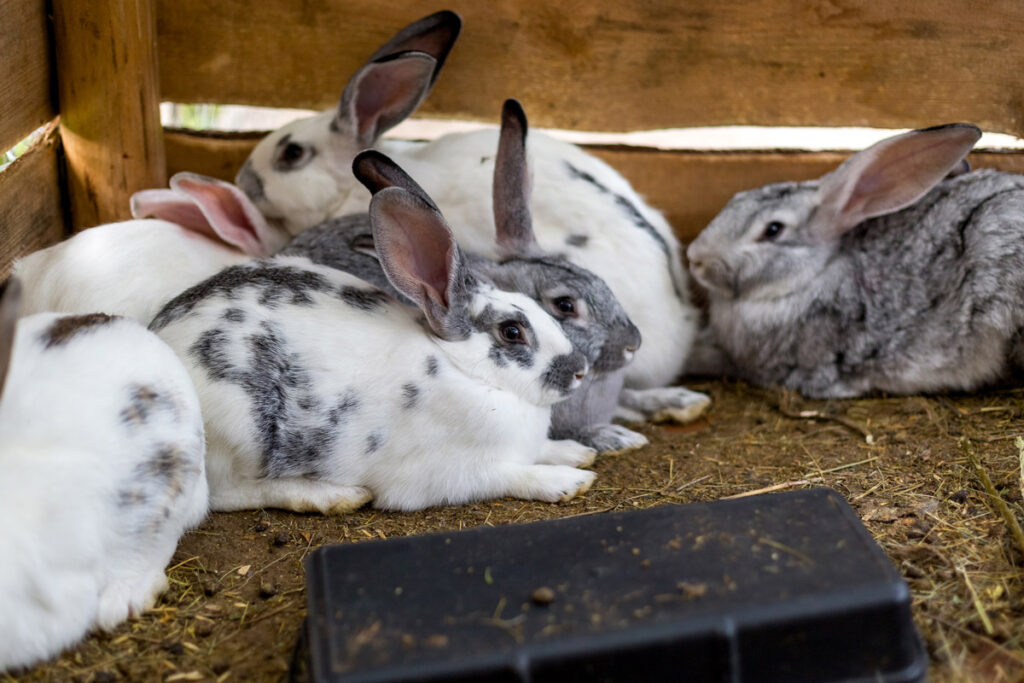
Breeding Rabbits
Rabbits are the fastest growing feed to meat ratio animal. They are very quiet and can be raised with a relatively small amount of space.
Breeding rabbits does take a lot of structure and schedule to keep on top of it and make the most of it.
Keep your male and female rabbits separate until it is time to breed. Then bring the female to the male. Breed them on schedule and make sure to get the male kits out from under the females so they don’t rebreed.
When considering raising meat animals on your homestead, we think adding in the ability to breed those animals for a continuous closed loop is the best way to maintain a healthy herd, flock, or whatever it is you're raising, as well as to know your animals are getting the best at every step in the process.


